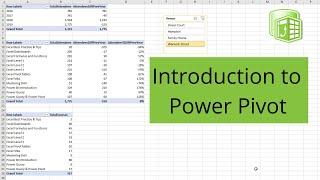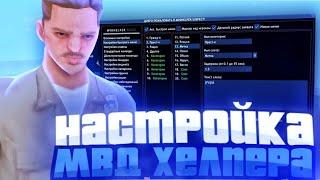
Getting Started with STM32 and Nucleo Part 6: Timers and Timer Interrupts | Digi-Key Electronics
Комментарии:

Where do you get the documentation like that
Ответить
I have two assignments that are based on timers, one based on a normal timer and the other a countdown timer. Does anyone know where I can get help?
Ответить
Curious why you picked TIM16 when TIM2 can go so much longer without resetting...
Ответить
Awesome
Ответить
Thanks for the video!
Ответить
Are existing other tutorials to make this only in CMSIS? Because learn the HAL with complete other names isn't productive when you had start with the CMSIS.
Ответить
This dude rips.
Ответить
Why Timer16 in the first place? Or could it just be any other timer?
Ответить
Hi there is there a calculator for STM32 to help me figure out how to setup clocks, prescaler, multipliers output capture for 833.33 microseconds. I’m using the 476RG 106RG nucleo boards thank you.
Ответить
Keep up the good work!
Ответить
Great course, Shawn, many thanks!
Ответить
This engineer is the best in the business.... clear and concise and to the point! can not get any better!
Ответить
Amazing tutorail
Ответить
Nice! Also, if you don't need any of the timer functionality (like triggering ISRs/callbacks or toggling pins), an easy way to measure times to the nearest millisecond is to use HAL_GetTick(), although you may have to handle overflow cases for very long-running systems (overflow happens after ~49 days and it wraps back around to zero). This function is already setup in HAL_Init(), so no additional setup is necessary.
uint32_t start_time = HAL_GetTick();
// do something
uint32_t total_time = HAL_GetTick() - start_time; // total time elapsed in milliseconds

Thank You!!! Please make a video on HAL Systick Timer.
Ответить
Great stuff
Ответить
Just a quick question on the subject. I am fairly new to Embedded electronics.
I am planning to design a midi control surface that incorporates lots of rotary encoders on (as many as possible). I was wondering how I could ascertain how many GPIOs that have "attached" interrupts on them. Would be grateful for any advice here. Otherwise keep up the good work! thanks

what a great tutorial!
Ответить
to much bla bla no examples for beginners as simple
Ответить
Thank you very much
Ответить
more videos please ........................................!!!!!!!!!!!!!!!!!!!!!!!!!!!!!!!!!!!!!!!!!!!!!!!!!!!!!!........................................!!!!!!!!!!!!!!!!!!!!!!!!!!!!!!!!!!!!
Ответить
Nice video, keep it up, thank you :)
Ответить
.
Ответить
Very useful series. Thanks for these videos.
Ответить
Why you left the variable "uart_buf_len" type int not uint16_t?
Ответить
thanks. i hope there will be more of this series about stm32 and nucleo dev board
Ответить
Amazing tutorial! Thank you very much
Ответить
Great video, and I'm learning a lot, but haven't forgot to show how to enable UART2 in configuration wizard, and what mode to choose?
Ответить
Thank you so much for these videos. I saw the whole 6 videos. They are really excellent. Can you continue these videos? I will see all of them. And I also like to know about TFT LCDs and more other examples.
Ответить
So do we take value of HCLK or APB1/APB2 Timer clock to prescale upto 1 MHz? Asking because you said if we change the mulplier and prescaler values of HCLK then we will have to consider different values.
Ответить
Where is video about PWM???
Ответить
It would be nice to know how to register callbacks for individual timers
Ответить
Will wait for new series. Thank you!
Ответить
A very useful video. Though it would have been easier to watch if there were at least a 1000 milliseconds pause between sentences.
Ответить
Great!, extremely looking for new examples with STM32CubeIDE !!
Ответить
This was really helpful!
Ответить
These videos are super helpful. Thanks!
Ответить
I love these videos
Ответить
I hope It will be continue
Ответить
Hi Shawn Hymel I am working on a simple implementation that checks each character being received using HAL_UART_Recieve_IT and when \n or \r is recieved it gets copied to another buffer. I have enabled USART as a global interrupt and wish to know how and where to use the Receive call back function. I am stuck and confused about this from a long time.
Ответить
Shawn, you structured it very well. 1hr Lecture shortened under 15 mins. Worth every sec spent on this video series.
Ответить
Absolutely loving these STM32 tutorials! Thank you for putting time into these!
Ответить
Great Video, thank you so much.
Ответить
This may be a dumb question but why don't we just use the timer rollover interrupt handler to write our LED toggle code? It would normally appear above main. What's the purpose of callback functions??
Ответить
Thanks!!!
Ответить
Shawn may actually make HAL useful to us bare-metal skeptics. He goes a mile-a-minute but one can always stop and replay. Great stuff!
Ответить

























